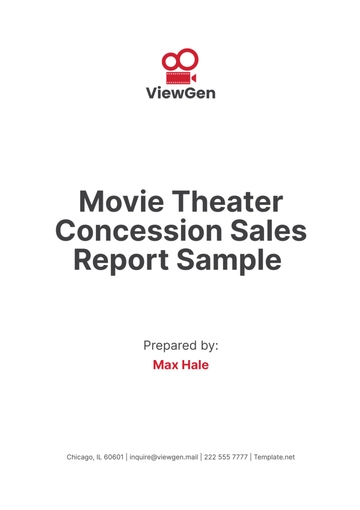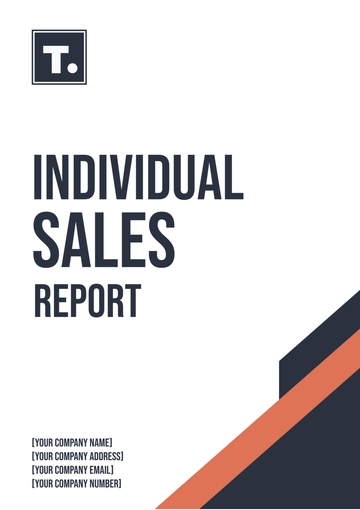Free Retail Sales Report

1. Executive Summary
In 2050, [Your Company Name] achieved substantial growth in its retail sales operations, with total revenue reaching $[1,500,000,000], a [12]% increase from the previous year. This report provides an in-depth review of the company’s retail performance, focusing on the financial outcomes, regional differences, product category contributions, and emerging trends in the retail market. The key factors behind this growth were improved online sales strategies, effective seasonal promotions, and the introduction of eco-friendly product lines that appealed to the growing base of environmentally conscious consumers. Additionally, [Your Company Name] was able to leverage advanced technology such as AI-driven marketing campaigns and enhanced customer service platforms, which played a significant role in driving both sales and customer satisfaction. Although the company encountered challenges, such as delays in supply chains and increased competition, these were mitigated by strategic adjustments and innovation. The report also highlights future opportunities in new markets, particularly in South America and Africa, where the company can further expand its presence.
2. Introduction
2.1 Purpose of the Report
The primary purpose of this report is to provide an analytical overview of [Your Company Name]’s retail sales performance during the year 2050. It seeks to assess how well the company met its sales targets, understand the factors that influenced its overall performance, and recommend strategies for optimizing growth in future years. The goal is to present actionable insights that can be used by the leadership team to make informed decisions and adjust business strategies accordingly. By reviewing this report, stakeholders will gain a deeper understanding of where the company stands in comparison to competitors and identify areas where performance can be improved to ensure sustained success.
2.2 Scope of the Report
This report covers a wide range of performance metrics, including total sales revenue, breakdowns by geographic region, performance across different product categories, and the impact of online versus in-store sales. It also explores key performance indicators (KPIs), such as conversion rates and average transaction values, which provide a deeper insight into the effectiveness of the company’s sales and marketing strategies. The scope of the report extends to analyzing current industry trends, evaluating customer retention rates, and assessing the success of [Your Company Name]’s promotional campaigns. Moreover, the report touches upon the challenges faced by the company in 2050 and identifies potential opportunities that may be capitalized on in the coming years.
2.3 Methodology
To compile this report, data was gathered from several internal and external sources. These include the company’s sales tracking systems, customer surveys, and third-party market research reports. Additionally, historical sales data from previous years was used to compare year-over-year performance, providing a clearer picture of growth patterns and challenges. Both quantitative and qualitative methods were employed, with a particular focus on customer feedback to understand the evolving preferences in retail. For instance, customer feedback was collected via online surveys and in-store interviews, while quantitative data came from detailed transaction logs and financial statements. This comprehensive methodology ensures that the findings are based on both hard data and consumer insights, making the conclusions robust and reliable.
3. Sales Performance Overview
3.1 Total Sales Revenue
The total sales revenue for [Your Company Name] in 2050 amounted to $[1,500,000,000], representing a year-over-year growth of [12]%. This impressive performance can be attributed to several key factors, including a robust holiday season, the growing popularity of online shopping, and the successful introduction of new, high-demand product lines. Revenue growth was particularly strong in the last quarter of the year, with a peak during the Black Friday and holiday shopping periods. Sales were also supported by an effective digital transformation strategy, where AI-driven personalized marketing and improved customer engagement led to increased consumer spending. Furthermore, the integration of sustainability-focused product lines into the core offerings helped capture the attention of environmentally conscious shoppers, thereby expanding the customer base and fostering brand loyalty.
Month | Revenue ($) | Growth Rate (%) |
|---|---|---|
January | 120,000,000 | 10% |
February | 110,000,000 | 8% |
March | 125,000,000 | 12% |
April | 130,000,000 | 15% |
3.2 Regional Performance
The company’s sales performance varied significantly by region. North America remained the largest contributor to overall revenue, with total sales of $[700,000,000], accounting for [46]% of the total. This region experienced strong growth in both online and in-store channels, with a noticeable spike in consumer activity during major retail events like Black Friday. In Europe, [Your Company Name] capitalized on the increasing demand for eco-friendly products, which resulted in a regional revenue of $[400,000,000], contributing [27]% to the total sales. The Asia-Pacific region also showed impressive growth, with total revenue of $[300,000,000], reflecting both the rapid expansion of e-commerce in the region and the rising middle class’s purchasing power.
3.3 Product Category Performance
Product categories were diverse, but electronics and apparel were the top-performing segments. Electronics, in particular, experienced a surge in sales with innovative new launches in smart technology and home automation products. Apparel sales also performed well, particularly with the launch of exclusive seasonal collections. The personal care category showed steady growth due to rising consumer awareness of self-care products, while home goods experienced a modest increase, largely driven by home renovation trends.
Category | Revenue ($) | Growth Rate (%) |
|---|---|---|
Apparel | 500,000,000 | [8]% |
Electronics | 400,000,000 | [15]% |
Home Goods | 300,000,000 | [10]% |
Personal Care | 200,000,000 | [9]% |
4. Key Performance Indicators (KPIs)
4.1 Conversion Rates
Conversion rates, which measure the percentage of visitors who make a purchase, saw an improvement in 2050, reaching [5.5]%. This marks an increase from the previous year’s rate of [4.8]%. The enhancement in conversion rates was driven by several initiatives, including the optimization of the website’s user interface and personalized marketing campaigns. The integration of AI-powered product recommendations, tailored to individual customer preferences, played a critical role in converting website visitors into paying customers. Additionally, the introduction of personalized offers based on browsing history and past purchases contributed to the uptick in conversion rates.
4.2 Average Transaction Value (ATV)
The Average Transaction Value (ATV) for [Your Company Name] was $[85] in 2050, representing a [7]% increase compared to the previous year. This increase was primarily attributed to higher-value purchases, driven by promotions encouraging customers to buy complementary items in bundles. For example, during the holiday season, targeted discounts on electronics and home appliances led to customers purchasing multiple items per transaction. Furthermore, the introduction of exclusive premium products and subscription-based services contributed to a higher ATV across both online and in-store transactions.
4.3 Customer Retention Rate
Customer retention reached an impressive [70]%, a [5]% increase over the previous year. This growth was the result of several strategies aimed at enhancing customer loyalty. For example, [Your Company Name] expanded its loyalty program to include rewards for both online and in-store purchases. Additionally, the company invested heavily in post-purchase customer engagement through personalized emails, targeted promotions, and an improved customer support system. By building stronger relationships with existing customers, the company was able to encourage repeat business, which contributed significantly to the overall sales growth.
5. Trends in Retail Sales
The retail landscape in 2050 continued to evolve, driven by rapid advancements in technology, changing consumer behaviors, and the growing influence of global events. Understanding these trends is critical for [Your Company Name] to stay ahead in a competitive market. This section explores the major trends observed in 2050, with a focus on seasonal fluctuations, the balance between online and in-store sales, and other key developments shaping the retail industry.
5.1 Seasonal Trends
Seasonal patterns remained a dominant factor influencing retail sales. By carefully aligning marketing efforts and inventory planning with these trends, [Your Company Name] successfully maximized revenue during peak periods:
Holiday Shopping Boom
The holiday season continued to be the single largest revenue driver, contributing approximately [30]% of the annual revenue. Black Friday and Cyber Monday promotions were particularly effective, with innovative campaigns such as flash sales and limited-time exclusive deals creating a sense of urgency among shoppers. Holiday bundles, such as "Gift Sets for Every Budget," saw increased traction, with customers appreciating the convenience of pre-packaged offerings.Example Campaign: The "Green Holidays Bundle," which combined eco-friendly products at a discounted rate, attracted both value-driven and environmentally conscious shoppers.
Back-to-School and Graduation Periods
Another significant trend was the spike in sales during the back-to-school season, especially in the apparel and electronics categories. With parents and students prioritizing affordability, [Your Company Name] launched targeted promotions such as “Buy Two, Get One Free” deals on clothing and discounts on school supplies and tech gadgets.Special Event-Driven Sales
In addition to traditional seasonal trends, special events such as Mother’s Day, Father’s Day, and Valentine’s Day saw steady growth in sales. These events provided an opportunity for the company to promote premium and personalized items, such as customized jewelry, gift baskets, and electronic gadgets with engraving services.Weather-Driven Retail Opportunities
The year’s unpredictable weather patterns also influenced seasonal retail trends. Prolonged summer months in some regions led to higher sales of outdoor and recreational products. Similarly, earlier-than-expected winter conditions boosted sales of seasonal apparel, such as jackets and boots, along with home heating solutions like electric heaters and smart thermostats.
5.2 Online vs. In-Store Sales
The dynamic between online and in-store shopping continued to shift in 2050, with e-commerce cementing its position as a critical sales channel. However, physical stores also maintained their relevance by adapting to changing consumer preferences:
Online Sales Growth
Online sales reached $[600,000,000], accounting for [40]% of the total revenue—a [20]% increase compared to the previous year. This growth was driven by several factors:Improved Digital Infrastructure: Faster loading times, intuitive navigation, and personalized user experiences created a seamless online shopping experience.
Mobile Commerce Dominance: Mobile shopping accounted for nearly [65]% of all online transactions, underscoring the importance of responsive design and mobile-first strategies.
Social Media Integration: Shoppable posts on platforms such as Instagram, TikTok, and emerging social commerce apps directly contributed to increased sales. Customers were able to discover products and complete purchases without leaving their social media apps, creating a frictionless buying journey.
Notable Trend: Live shopping events, where influencers showcased products in real time, gained significant traction. These events encouraged impulse purchases and allowed customers to interact with hosts to ask questions about the products.
In-Store Sales Resilience
Despite the rise of e-commerce, in-store sales remained a major contributor, generating $[900,000,000] in revenue. Physical stores continued to attract customers by evolving into experience-driven spaces rather than just transactional hubs. Key strategies included:Immersive Experiences: Some flagship stores offered augmented reality (AR) displays where customers could virtually try on apparel or visualize how furniture would look in their homes.
Local Inventory Optimization: Leveraging real-time inventory data, stores ensured that high-demand products were always available, reducing the likelihood of lost sales due to stockouts.
Hybrid Shopping Models: Services like "buy online, pick up in-store" (BOPIS) and curbside pickup bridged the gap between online and offline shopping, offering convenience while driving foot traffic to stores.
Blurring of Boundaries Between Channels
The boundary between online and in-store sales blurred further with the rise of omnichannel strategies. Customers often began their shopping journey online, researching products and reading reviews, before completing their purchase in-store. Conversely, in-store shoppers used mobile apps to check product details or compare prices, demonstrating the interconnectedness of these channels.
5.3 Other Notable Retail Trends
Beyond seasonal and channel-specific trends, broader societal and technological factors significantly influenced retail sales patterns in 2050:
Sustainability and Ethical Consumerism
Customers increasingly prioritized products and brands that demonstrated a commitment to sustainability. Retailers offering eco-friendly packaging, carbon-neutral delivery options, and products made from recycled or biodegradable materials saw higher levels of customer loyalty.Example: The “Green Shopper Initiative” by [Your Company Name] offered discounts for customers returning packaging for recycling, encouraging repeat purchases while supporting the company’s sustainability goals.
Personalization at Scale
The era of "one-size-fits-all" marketing was firmly replaced by hyper-personalization. Data-driven insights enabled [Your Company Name] to create tailored shopping experiences. For instance:AI-powered recommendations suggested complementary items based on browsing and purchase history.
Dynamic pricing models offered real-time discounts to individual shoppers based on their likelihood of purchasing.
Personalized promotions, such as birthday discounts or exclusive early access to new products, strengthened customer relationships.
Subscription Models
Subscription services gained momentum in 2050, with customers opting for convenience and predictability. [Your Company Name] introduced subscriptions for popular items such as personal care products and household essentials. This model not only improved customer retention but also provided a steady revenue stream and more predictable inventory planning.Tech-Driven Shopping Experiences
Advanced technology continued to revolutionize retail. Innovations like virtual reality (VR) showrooms, autonomous delivery drones, and smart mirrors in fitting rooms enhanced the customer experience and differentiated [Your Company Name] from competitors.Health and Wellness Focus
The global emphasis on health and wellness led to increased demand for products in categories such as fitness equipment, organic foods, and skincare. Retailers that incorporated wellness themes into their marketing campaigns and product offerings saw significant growth in these categories.
6. Challenges and Opportunities
6.1 Identified Challenges
Despite an overall strong performance in 2050, [Your Company Name] faced several challenges that required strategic adjustments:
Supply Chain Disruptions
Supply chain disruptions were one of the most significant obstacles in 2050, particularly during the third quarter. Global logistics challenges caused delays in product delivery, which affected inventory levels across both online and in-store channels. These delays were especially impactful during high-demand periods like back-to-school shopping in August and pre-holiday preparations in October. Consequently, the company had to invest in expedited shipping methods and alternative suppliers, which marginally increased operational costs.Increased Competition
The retail landscape became increasingly competitive, with new entrants in the e-commerce space offering aggressive pricing and quicker delivery times. Established competitors also enhanced their offerings, introducing AI-driven platforms and subscription-based services. Maintaining market share in such a competitive environment required significant marketing investments and innovations, which added pressure to the company’s profit margins.Economic Uncertainty
In 2050, inflationary pressures and fluctuating economic conditions influenced consumer spending behavior. While affluent customers continued purchasing premium products, the mid-tier customer segment exhibited cautious spending. This shift required the company to recalibrate its pricing strategies, balancing affordability with profitability.
6.2 Emerging Opportunities
Sustainability as a Differentiator
Consumer demand for environmentally sustainable products created a significant growth opportunity. By expanding the eco-friendly product line and emphasizing green packaging, [Your Company Name] successfully attracted a younger demographic focused on ethical shopping practices. Partnerships with green-certified suppliers also added credibility to the company’s sustainability initiatives.AI and Automation for Retail Innovation
The adoption of AI and automation opened avenues for operational efficiencies and personalized customer experiences. Predictive analytics allowed the company to forecast demand more accurately, ensuring optimal inventory levels. Automated chatbots and virtual shopping assistants enhanced customer support, reducing response times and improving satisfaction.Global Expansion
Untapped markets in South America and Africa represented a major opportunity for growth. By establishing a physical presence and localized e-commerce platforms in these regions, [Your Company Name] could reach a new customer base. These markets also offered the advantage of less saturation compared to North America and Europe, allowing for a more prominent competitive edge.
7. Recommendations for Improvement
Based on the analysis of 2050’s performance, the following recommendations are proposed to ensure continued growth and address challenges effectively:
Enhance Supply Chain Resilience
Diversify supplier networks to reduce reliance on a limited number of vendors.
Invest in real-time supply chain tracking systems to identify and mitigate potential bottlenecks before they escalate.
Build regional distribution centers to ensure quicker and more efficient delivery to key markets.
Invest in Customer Experience
Expand loyalty programs to include tiered memberships, offering exclusive perks such as early access to sales or premium support.
Integrate augmented reality (AR) features into the online shopping platform, allowing customers to virtually "try on" products or visualize them in real-world settings.
Offer flexible payment options, including buy-now-pay-later schemes, to attract budget-conscious customers.
Focus on Sustainability
Increase the share of sustainable products in the company’s portfolio to at least [25]% by 2051.
Promote green initiatives through marketing campaigns, highlighting the company’s commitment to reducing its environmental footprint.
Explore partnerships with NGOs and environmental organizations to enhance credibility and visibility in the sustainability space.
Expand into Emerging Markets
Conduct market research to identify key consumer preferences in South America and Africa.
Launch region-specific product lines to cater to local tastes and cultural nuances.
Invest in digital marketing campaigns to raise brand awareness and establish a strong presence in these new markets.
Leverage Data for Personalized Marketing
Use AI-driven insights to create hyper-targeted advertisements that resonate with individual customers.
Regularly analyze customer purchasing patterns to identify trends and adjust product offerings accordingly.
Introduce dynamic pricing models to stay competitive in real-time while optimizing profit margins.
8. Conclusion
The year 2050 was a milestone for [Your Company Name], as the company achieved $[1,500,000,000] in retail sales revenue, marking a [12]% growth from the previous year. This success was driven by a combination of effective digital transformation strategies, a strong focus on sustainability, and targeted promotional campaigns during peak shopping seasons. The company’s ability to adapt to shifting consumer preferences and leverage technology for operational efficiency was instrumental in achieving these results.
While challenges such as supply chain disruptions and increased competition tested the company’s resilience, strategic responses helped mitigate their impact. Opportunities for future growth, particularly in untapped markets and sustainability-focused product lines, provide a clear roadmap for 2051 and beyond.
To maintain momentum, it is critical for [Your Company Name] to continue investing in innovation, enhancing customer experiences, and expanding its global footprint. By staying ahead of industry trends and adapting to the evolving retail landscape, the company is well-positioned to achieve sustained success in the years to come.
Appendix
Regional Performance
Region | Revenue ($) | Share (%) |
|---|---|---|
North America | 700,000,000 | 46% |
Europe | 400,000,000 | 27% |
Asia-Pacific | 300,000,000 | 20% |
Other Regions | 100,000,000 | 7% |
Monthly Revenue Data for Line Graph
Month | Revenue ($) |
|---|---|
January | 120,000,000 |
February | 110,000,000 |
March | 125,000,000 |
April | 130,000,000 |
May | 135,000,000 |
- 100% Customizable, free editor
- Access 1 Million+ Templates, photo’s & graphics
- Download or share as a template
- Click and replace photos, graphics, text, backgrounds
- Resize, crop, AI write & more
- Access advanced editor
Track and analyze your sales performance with the Retail Sales Report Template from Template.net. This editable and customizable template allows you to generate clear and insightful sales reports, helping you make data-driven decisions. The AI Editor Tool enables you to personalize the report to match your retail business requirements.
You may also like
- Sales Report
- Daily Report
- Project Report
- Business Report
- Weekly Report
- Incident Report
- Annual Report
- Report Layout
- Report Design
- Progress Report
- Marketing Report
- Company Report
- Monthly Report
- Audit Report
- Status Report
- School Report
- Reports Hr
- Management Report
- Project Status Report
- Handover Report
- Health And Safety Report
- Restaurant Report
- Construction Report
- Research Report
- Evaluation Report
- Investigation Report
- Employee Report
- Advertising Report
- Weekly Status Report
- Project Management Report
- Finance Report
- Service Report
- Technical Report
- Meeting Report
- Quarterly Report
- Inspection Report
- Medical Report
- Test Report
- Summary Report
- Inventory Report
- Valuation Report
- Operations Report
- Payroll Report
- Training Report
- Job Report
- Case Report
- Performance Report
- Board Report
- Internal Audit Report
- Student Report
- Monthly Management Report
- Small Business Report
- Accident Report
- Call Center Report
- Activity Report
- IT and Software Report
- Internship Report
- Visit Report
- Product Report
- Book Report
- Property Report
- Recruitment Report
- University Report
- Event Report
- SEO Report
- Conference Report
- Narrative Report
- Nursing Home Report
- Preschool Report
- Call Report
- Customer Report
- Employee Incident Report
- Accomplishment Report
- Social Media Report
- Work From Home Report
- Security Report
- Damage Report
- Quality Report
- Internal Report
- Nurse Report
- Real Estate Report
- Hotel Report
- Equipment Report
- Credit Report
- Field Report
- Non Profit Report
- Maintenance Report
- News Report
- Survey Report
- Executive Report
- Law Firm Report
- Advertising Agency Report
- Interior Design Report
- Travel Agency Report
- Stock Report
- Salon Report
- Bug Report
- Workplace Report
- Action Report
- Investor Report
- Cleaning Services Report
- Consulting Report
- Freelancer Report
- Site Visit Report
- Trip Report
- Classroom Observation Report
- Vehicle Report
- Final Report
- Software Report





























